Mimesis 2
Correspondence Between Jonas Mekas and José Luis Guérin
In 1548, a young Portuguese architect and illuminator, Francisco de Holanda, finished writing up four dialogues with Michelangelo. These were the first texts reproducing the conversations between two living western artists, even if we aren’t sure they actually took place in 1538, when Francisco was staying in Rome and met “Maestro Michel”, an event which is indeed attested. During their conversations, Francisco de Holanda and Michelangelo addressed numerous questions that were to become the topoi of art history (some already were, as they had already been discussed by Pliny and Aristotle): the comparative usefulness of painting in wartime and peacetime, the imaginary paintings described in literature, the beauty of the human body, the artist’s ethics, the limits of verbal description, the painter’s duty to excel in all manual crafts, the superiority of Italian painting… Why did a young Portuguese artist feel the need to record Michelangelo’s words in the form of a dialogue? Simone Matarasso-Gervais explains why: the painter of The Last Judgement, the fresco he had been working on for two years when he met Francisco de Holanda, embodies an ideal of virtuosity and specific freedom, “Michelangelo, the first artist to be totally independent from the guilds, was the finest embodiment of the absolute dignity of the painter.”1 At the time when Francisco de Holanda was finishing his manuscript, Portugal was in the grip of a State Inquisition. At the end of the Renaissance, engaging in a dialogue with a free man whose resplendent nudes had come up against the censorship resulting from the pictorial conventions defined during the Council of Trent (1545-1563) was tantamount to defying the civil and religious authorities and taking part in the preservation of humanistic values.2 This is how the western tradition of dialogue between living artists came about (in contrast with the ancient genre of the Dialogues of the Dead), from an eminently critical viewpoint.
Between 2010 and 2011, the filmmakers and artists José Luis Guérin and Jonas Mekas exchanged nine video letters as the result of an initiative of Jordi Balló. The result was a feature-length film of infinite tenderness, assembling a personal diary, travelogues and key reflections about images. Existential cinephilia, poetic horizons, artistic kinship, elegiac sensibility, a community of views, radicalness, autonomy, all these things bring together these two “friends in cinema” (as Jonas Mekas puts it), whose respective works are characterised by the renewal of descriptive forms and the challenges of observation. This perilous proximity could have given rise to a peaceful reverie among the silken sheets of shared presuppositions. However, what actually occurs is a sum of reflections, of annotations and visual initiatives, as clear as they are incisive, about the practice of contemporary images, in which they in no way resemble a separate, independent sphere, a piece of embroidery on the seamless dress of reality, but rather the warp woven through the weft of experience.3 The correspondence between José Luis Guérin and Jonas Mekas results in an ethnology about men of images. Two peerless experts in terms of history and praxis, meditate, in action and from the everyday, on some of the questions about mimesis that currently torment us all.
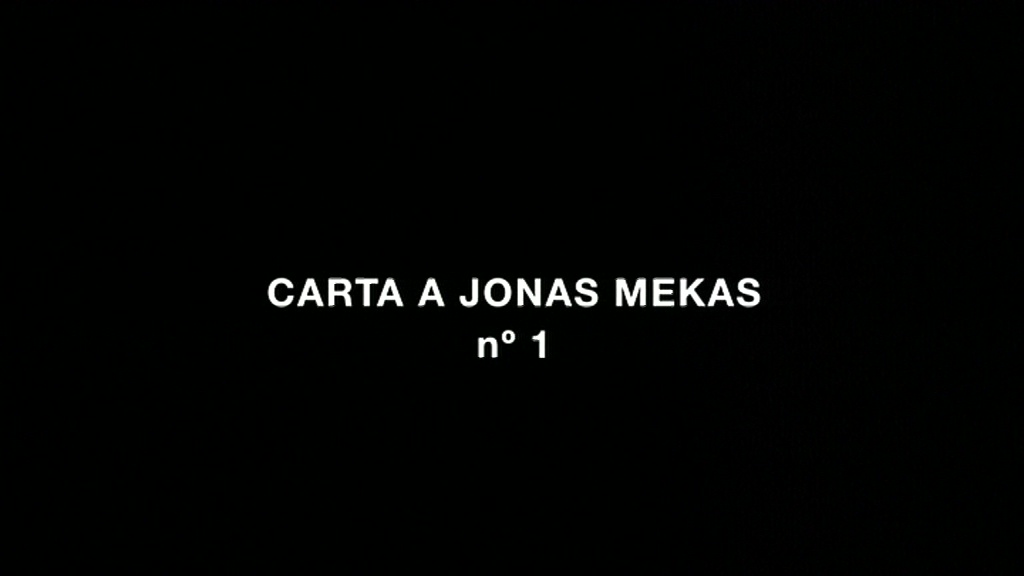
Genesis: the Road Towards the Concrete
Jonas Mekas’ work is characterised by the way he develops the forms of dialogue, exchange and circulation. His writings and films often amount to addresses and declarations; his books stem from messages and postcards (Artists’ Book (2003), a collection of letters received over the years from such diverse personalities as Fernand Léger, Carl Andre, Joan Crawford and Michelangelo Antonioni),4 his artistic achievements (Film Culture, Anthology Film Archives, etc.) build a community for all the media. A celebratory and commemorative work, like a glass of wine raised in honour of life. José Luis Guérin, whose films often pay tribute to other legendary artists (John Ford in Innisfree (1990)) or imaginary ones (the French photographer in Tren de sombras el espectro de Le Thuit [Train of Shadows, the Spectre of Le Thuit] (1997), knows Jonas’ literary and cinematic output inside out, and he shares his political and aesthetic values: political independence, freedom of form, generosity towards other people’s work, aspirations to happiness underpinned by melancholy. The physical encounter between both filmmakers, in a New York café, was filmed and the footage used in Guest (2010). What would be the first image to send Jonas Mekas, the Master of Liberty (as one would say “the Master of the Adorations” or “The Master of the Rebellious Angels” to refer to anonymous painters of the Middle Ages)? José Luis tells us:
“Jonas is a luminary, not just as a filmmaker, but also as an underground agitator and as the keeper of cinema’s memory. There’s something of Henri Langlois about him. Sometimes I think that it is as if André Bazin, Langlois and Jean-Luc Godard had come together in this new American cinema that is his. But Jonas couldn’t care less about these types of considerations. This wasn’t the way to approach it. I thought that the best way to establish a correspondence was to begin with specific things, the simplest things. I was wandering around Paris. Quite by chance, I came across the Boulevard des Capucines, the place where the Lumière Brothers had held their first public film screening. Then I remembered that the Lumières were very important to Jonas; he had even made a film about L’arrivée d’un train en gare de La Ciotat [The Arrival of a Train at La Ciotat Station]. Louis Lumière is like a brother to him. And then there’s the image of the filmmaker laid bare. Jonas holding his Paillard Bolex. Now that’s what I’d call a filmmaker: a man with a camera and nothing else.”5
Just like the little friar Ginepro, who wants to give his habit to a poor man and thereby lay himself totally bare, in spite of the fraternal admonishments of the more reasonable Francis,6 both filmmakers vie with each other in simplicity and veracity, becoming part of the long tradition begun with Diogenes, and continued by Giotto and Michelangelo who declared the nobility of the mimetic enterprise, in terms which, it is important to stress, were controversial at the time. “I declare to be excellent and divine above all others the painting that imitates the finest works of Our Immortal Lord, be it a human figure, or a strange wild animal, or a simple and easy fish, or bird in the sky, or any other creature. And this without the embellishments of gold, silver and very fine colours, but drawn simply with a quill pen or pencil, or a black and white brush.”7
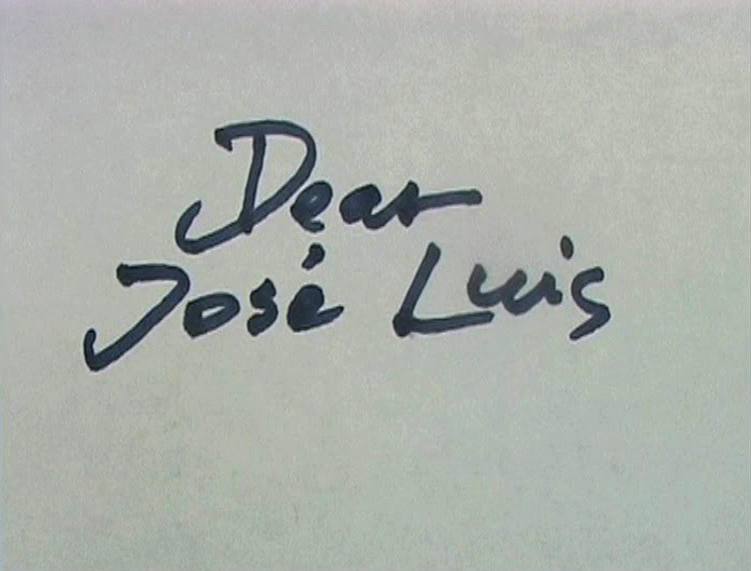
The Making of an Exactitude
The ideal of simplicity naturally entails the description of the process. The correspondence brings us this ancient form – poetic art – whereby an artist sheds light on the principles, the paths and challenges of its creation, in its most pared-down and demythologised state. In letter no. 4,8 Jonas Mekas describes his tools and his actual working conditions to José Luis: his “editing space”, his editing table, his archives, the material being used in his forthcoming project, Outtakes, but also the space outside, the trees then in blossom, as if he could only depict his own creation as part of the order of nature at a time when everything is coming back into bloom. However, he does so with a smile, since the shots that appear on screen of the viewer are full of snow: “Outside, spring; in my editing room, Winter.” The creation also entails a set of principles or protocols. In letter no. 6, Jonas, who is back from a trip to Poland and Slovakia, can’t get to sleep. In the middle of the night, he turns his camera back on and continues with his letter to José Luis: “Ah José Luis, we keep filming, yes we keep filming.” A close-up of his face: “This is another day, another night, very late, 2 or 3. Oh, all this business of reality, poetry… I’m not filming, I’m taping, videorecording moments of life around me… friends in my own life… details that I really need to tape, for whatever reason, I do not know (…), I just have to do it. (…) But it’s all a game, just playing with words. The fact is what I do and what you see is moments, fragments, that I record with my video camera as life goes on, continues. So it’s real. I do not tape 24 hours a day, I only tape a few moments every day (…). So the mystery remains. Why do I tape these minutes and not the rest of the day? That’s the beauty of life, that we keep going and no explanations are really needed. Explanation is only part of the game.”
The fundamental terms of the Jonas’ characteristic stylistics are explicit, an empirical tying together of seriality, of choice and contingency. As gestures, these three principles are modelled on the structures of lived experience: the recurrence that allows the effects of continuity without which we would be lost (seriality), the clearing away that allows us to trace our own path in the middle of the signals (choice), the unknown factor that constantly reinjects the energy of the real (contingency). As a style, they transform phenomena into fetishes: with Jonas Mekas, things, creatures or circumstances appear like markers (seriality), places of celebration (choice) that spill everywhere the subjectivity of the person who apprehends them (contingency). A nocturnal statement such as this, which is so simple and sincere, results in a history of forms that leads us from Dada to Fluxus and from Monet to Free Jazz: in other words, the history that conceives art as the creative expansion of the possible relationships with the present.
Although most of Jonas Mekas’ filmed initiatives are associated with a chronology (filmed and written journals, grouped together by decades, the video series 365, which also transposes the 366 poems by Petrarch, the founder of humanism), and while his letters for the correspondence espouse the linear duration, either continuous or discontinuous, of a moment taken from the continuum of life, the films and letters of José Luis Guérin always sculpt their own logic and singular form. Like an arachnidan architect, using visual annotations, José Luis puts together in his five letters an unseen framework of images: not just the effective shots, but an ensemble of potential, inchoative and even absented images, brought together by the editing process or evoked by the text, which intertwine in the most unexpected way in order to weave a history of images into a history of affects. The weaving takes, for instance, the form of a delay: before being able to show an image, it is appropriate to talk about its postulates and conditions of possibility (letter no. 1, about the Lumière Brothers). Or the reverse, the weaving together gives itself the means to gain access to the insistence on repetition, opposing the joint powers of memory and the document to death (letter no. 5, about Nika Bohinc, a young Slovenian film critic who has just been murdered in the Philippines with her partner Alexis Tioseco). In order to allow himself such an insistence, the slow-motion repetition of the camera’s gaze, which becomes an embalming caress on Nikita’s beautiful face, José Luis Guérin described, in turn, his “editing space”. Now, this space doesn’t solely consist of instruments, spools and stills; it integrates the connections stemming from the inscription “1900” on the façade of a building. José Luis wonders which of Méliès’ films its builders had seen in 1900? The building opposite dates from 1922: “While the builders were working on this building, Fritz Lang was filming Dr. Mabuse, der Spieler and Murnau Nosferatu.” And to fuel his reverie about the coexistence between the unquestionable buildings and the supposed visual culture of the workers, José Luis Guérin, in a virtuoso montage, transforms the architectural shots into the symbolics of a sequence of photograms, transferring the mineral to the register of the intermittence and immateriality characteristic of cinema images, for a sublime video homage to silver-emulsion photography. Human experience pulsates with images, not only those we make or those we don’t make, those we see or those we don’t see, but also images that are foretold, possible, guessed, attributed to the imaginary of others, converted, inverted, transformed, in a more or less dense interlacing of tangled sketches, wefts and mutual projections. Our life consists of the permanent and instantaneous task of editing together multiple systems of images. The correspondence between José Luis Guérin and Jonas Mekas starts to resemble our true psychological experiences; Eisenstein’s old dream begins to be realised.
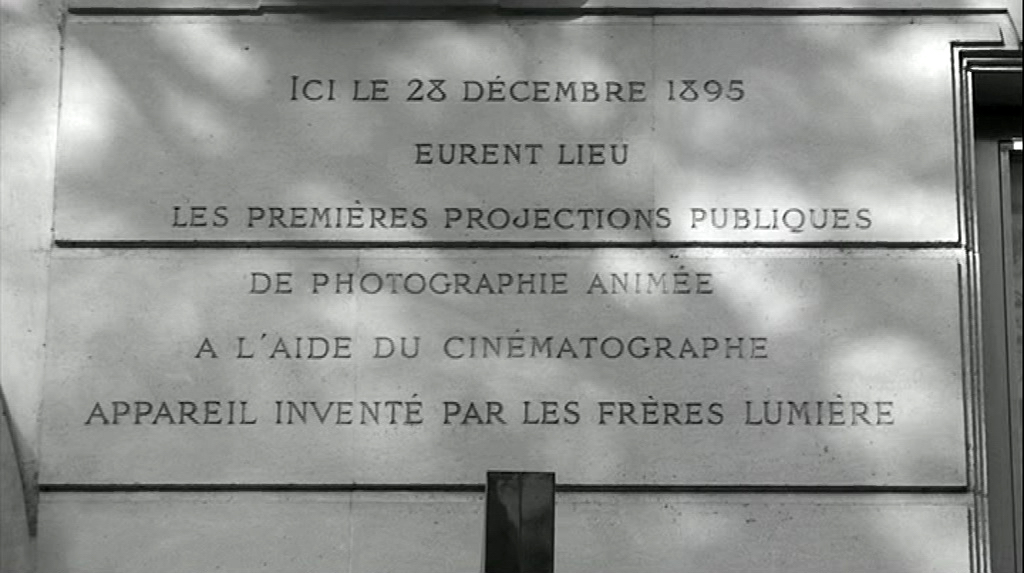
Causal Images
In 1912, the founder of iconology, Salomon Reinach, retraced the history of a turnaround: that of the traditional conception of images. Which historian, Reinach wonders, was the first to consider that an image wasn’t an illustrative and secondary artefact, in other words the consequence stemming from a text or the reflection of a referent, but an independent, active and causal element that could trigger myths and beliefs? This is in the chapter entitled ‘From the influence of images on the formation of myths’ in volume IV of his vast fresco Cults, Myths and Religions, which he had been working on since 1905.9 Reinach attributes the turnaround that reverses the status of the image from a determinate artefact to a determining cause, to the mythologist Alfred Maury and his 1843 work, Essai sur les légendes pieuses du Moyen Âge [Essay on the Pious Legends of the Middle Ages]. We must certainly make a connection between such a speculative reversal and the history of photography and the beginnings of the mass-circulation of reproductions on paper (invention of the calotype, 1843); in other words, this period when imprints multiply, become popular, free themselves of their technical origins and begin to roam the world at random.
In August 1978, Jonas Mekas decides to retranscribe his dreams, and will do so every day until June the following year. On 31st August, for instance, three months after the death of his friend George Maciunas, he dreams: “I’m in the street the town is familiar to me but it isn’t New York I’m standing in the street and I’m looking into a big house through the open door and people are doing several things someone tells me that they are preparing some numbers for a Fluxus performance in honour of George and I say that I’m going to do one too, I’m going to present the short scene taken from Dovjenko’s The Earth that George loved more than any other scene, the sequence during which the old man visits the grave of his late friend and puts his ear to the ground to listen to the message his friend had promised to send him after his death.”10 With such an example, that combines a cinephile’s quotations, sketches, presumptions and promises of images, that associates the culture of modern representations with the most archaic cultural practices (the tomb as the entrance to the world beyond the grave), we notice that since Alfred Maury’s reversal, human psychological activity has been enriched by multiple statuses, modalities, histories and circulations of images. Within this collective history, which depends as much on poetry as it does on technology, filmmakers undoubtedly represent, first and foremost, the forerunners of an anthropological adaptation to images, the psychological laboratories of a ferment and tremendous complexification. Just like the essays (on film and on paper) by Alberto Cavalcanti, Chris Marker and Jean-Luc Godard, the correspondence between Guérin and Mekas bears witness to this Mimesis 2, this Mimesis according to which the image and the real no longer come face to face, like two very distinct ontological states whose difference would make it possible to structure discernment, but which echo one another and are in a relationship of commensalism,11 parasitism, symbiosis and permanent exchange. They are not completely inextricable, but are woven together with the fabrics of experience of multiple weaves.12 For us, the image will, from now, turn out to be decidedly real, regardless of its nature and medium (psychological/material, patent/latent, effective/virtual, etc).

Reweaving the World
Injecting the world with love: with Mekas and Guérin such an everyday assiduous practice, which is performed in the lightness of action and without doctrinaire intentionality, unfolds from a shift that makes the specific properties of cinema a political necessity. It is a question of apprehending things from their links. In this regard, two letters answer each other, point by point, and make a demonstration as discreet as it is powerful.
In letter no. 7, José Luis reconsiders a scene he filmed at the Wroclaw Festival: strollers, people attending the festival, silhouettes pass in front of a huge screen set up in a square for an open-air screening. This everyday shot offers a minimalist scenography that captures the living; it is the specific disorder of the fleeting crossing between beings, in the immediacy of the here and now but also to the scale of our lives, a basic elementary allegory about the human condition – and one cannot help but think about the literality of Guy Debord’s title, Sur le passage de quelques personnes à travers une assez courte unité de temps [On the Passage of a Few People through a Rather Brief Moment in Time, 1959). In his voice-over to the shot, José Luis dreams that, in the observation of these random journeys, a secret order would suddenly be revealed, an orchestration, a harmony. In fact he reformulates Jean Epstein’s often expressed ideal: “M. W. M. Coleman’s meticulous observations show that, at certain times, all the movements (locomotive, respiratory, masticatory, etc) of a gathering of the most diverse individuals, which could include men and animals, without being in the slightest synchronous, allow a certain rhythm, a certain frequency, be they uniform, or be they in a simple musical relationship. (…) There is a sort of euphony, of orchestration, of consonance, the causes of which are, at the very least, obscure. (…) The cinema already knows this cadence better and differently than our eye does; it knows how to incorporate this rhythm and the fundamental with its harmonics. (…) It is here that the cinema will one day find its own prosody. (…) My love intensifies. Everything is suffused with expectation. Sources of life spring up from sterile, unexplored corners. The epidermis spreads a luminous tenderness. The cadence of the crowd scenes is a song.”13 José Luis’ desire for harmony manifests itself through one device; it will be resolved at the end of the letter, in the opposite of a crowd shot, in an intimate image of himself hemmed in at the core of the other person’s body, in the centre of a woman’s pupil that has been enlarged to be the same size as the screen, the case of a fusion that is as unquestionable as it is fleeting, frozen in its swift effectiveness, its overwhelming mystery and its instantaneous denial.
In letter no. 8, Jonas sends José Luis a “fragment of paradise”, but in reverse, in real time. In a Brooklyn street, a pigeon pecks on a flight of steps, Jonas films at length, the most insignificant and strange things, the most ordinary and immaterial, two young passers-by ask him if they can sit on the steps, they sit down, they too start to eat, “a gathering of the most diverse individuals, which could include men and animals”, euphony, orchestration, consonance.
No matter how modest or threatened it may be, the harmony, that transforms beings into the plenitude of their relationships, is the euphoric apogee of a greater poetic enterprise: in the correspondence we will see how every walk is transformed into a pilgrimage, every phenomenon is transformed into an encounter; or put another way, every entity is transformed into a relationship. At a time of lethal individualism, the critical dimension of such a project doesn’t even need to be clarified. It finds its emblem in the burlesque punk Christmas card which Jonas invents for José Luis in letter no. 8, in a gesture that is high on laughter and which, under its destructured guise, is part of the long tradition of the critical customs of the Christological figure. “It was the story of Christ, with its radical mix of everyday reality and sublime tragedy, that demolished the classic rule of styles.”14 This dimension finds its apologue in letter no. 9 from José Luis, in which his observation of the patient work of tireless ants on a granite tomb in a Japanese cemetery replaces a missing shot by Jonas Mekas filmed from a distance, years earlier, among the everyday kinship of his New York community, in order to resonate with the disaster in Japan, the tsunami and nuclear catastrophe that took place while the filmmaker was editing his film.
“With the earthquake in Japan, I changed everything (‘reaction to life’) and found that it wasn’t possible to include the two ideas, it didn’t work in terms of the composition. Now I find it interesting to show this process by leaving only the trace of the first idea on the images of the second. There you are. That’s how it went. Cinema always involves relinquishing something.”15 From the narrated shot of New York to the Japanese ants that fill the screen, the same patient solidarity, activated here by the very absence of the initial image. Are there artists among the ants? Guérin and Mekas show that they are worthy of being adopted by the Japanese ants.
The arte povera of Jonas Mekas and José Luis Guérin expands on the rustling cinematic field that calls for experimental immanence. This immanence, through which every phenomenon, seized by its unheard-of dimension, engenders infinite surprises and resonances and can become a vibrant party, to our eyes replaces a reality that is reduced to the identitary approximation to the real, that is a continuous occurrence, a more exact real, because it turns out to be stratigraphical and unlimited for the images that are part of its armature.
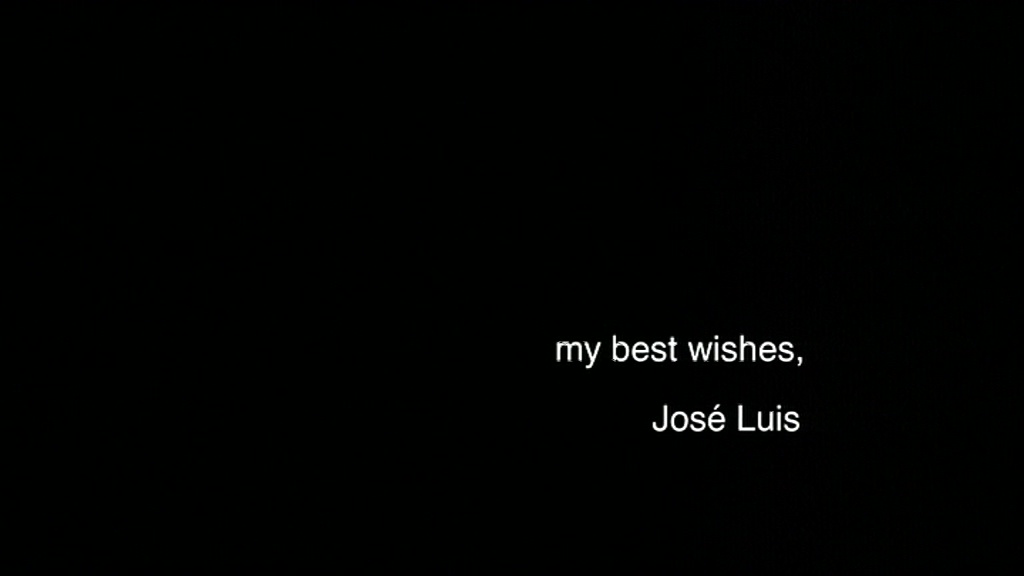
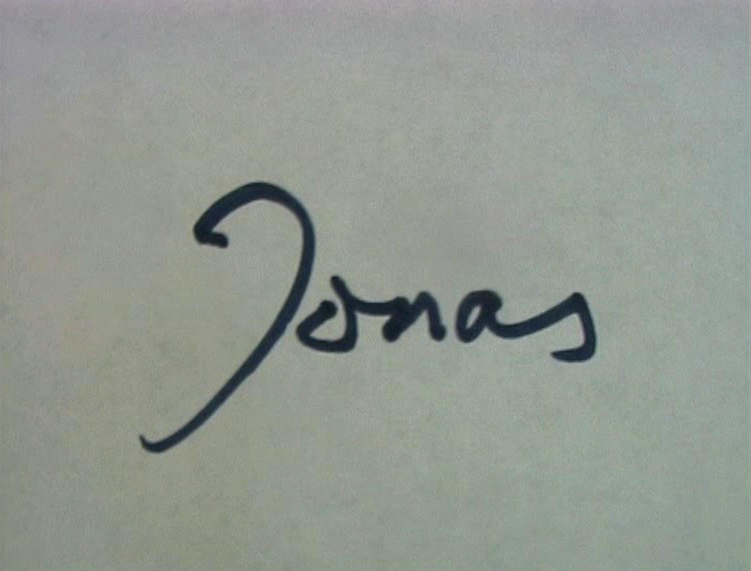
- 1Simone Matarasso-Gervais, preface to Francisco de Holanda, De la peinture : dialogues avec Michel-Ange, 1548 (Alinea: Aix-en-Provence, 1984), p.18. [emphasis added]
- 2“The body of the man Michelangelo had shown on the ceiling of the Sistine Chapel in its triumphant and innocent nakedness would no longer have an accepted place in The Last Judgement. Daniele da Volterra had to reclothe these nudes and Michelangelo’s work was very close to suffering the same fate as Jacopo Pontorno’s The Last Judgement in the church of San Lorenzo in Florence: which was daubed with whitewash.” Simone Matarasso-Gervais, De la peinture : dialogues avec Michel-Ange, op. cit., p. 17.
- 3Sewing terms: the warp and the weft are the two components of a fabric.
- 4Jonas Mekas, Artists’ Book (Onestar Press: Paris, 2003).
- 5Interview with the author in Paris on 15th March 2011, retranscribed by Christin Krause.
- 6Francesco Giullare di Dio (Roberto Rossellini, 1950).
- 7Francisco de Holanda, De la peinture : dialogues avec Michel-Ange, op. cit., p. 74.
- 8The letters are numbered sequentially from 1 to 9 (as opposed to different sequence of numbers assigned to each filmmaker in each set of letters).
- 9Salomon Reinach, Cultes, mythes et religions, vol. 4 (Ernest Leroux éditeur: Paris, 1912), pp. 94-108.
- 10Jonas Mekas, My Night Life, tr. Marc Ulrich (Baltos Lankos: Vilnius, 2007), not paginated. (punctuation as in the original text).
- 11Commensalim, a biological term, is an association between two species that “live in regular association”. Cf. Maurice Caullery, Le parasitisme et la symbiose (Librairie Drouin: Paris, 1922), p. 14.
- 12The weave is the way in which the threads are woven: for instance, serging, fashioning, lamé…
- 13Jean Epstein, “Le sens 1bis,” 1921, Bonjour Cinéma, in Écrits 1, vol. 1 - 1921-1953 (Paris: Cinéma Club / Seghers, 1974), p. 92.
- 14Erich Auerbach, Mimésis. La représentation de la réalité dans la littérature occidentale, 1945-1949, (Paris: Gallimard, 1977), p. 550.
- 15José Luis Guérin, letter to the author, 6th June 2011.
Originally published as ‘Mimésis 2. Correspondance entre Jonas Mekas et José Luis Guérin’ in Correspondencias, Jordi Ballo (ed.) (Intermedio: Barcelona, 2011).
Balló, Jordi (director) (2011). The Complete Letters. Filmed Correspondence. Barcelona: CCCB / Intermedio. Coproduced by the Centre de Cultura Contemporània de Barcelona – CCCB, La Casa Encendida, Centro Cultural Tlatelolco & SEACEX.
Thanks to Jordi Balló, Anna Escoda, José Luis Guérin, Danièle Hibon, Christin Krause, Rosa Puig, Galerie Nationale du Jeu de Paume

